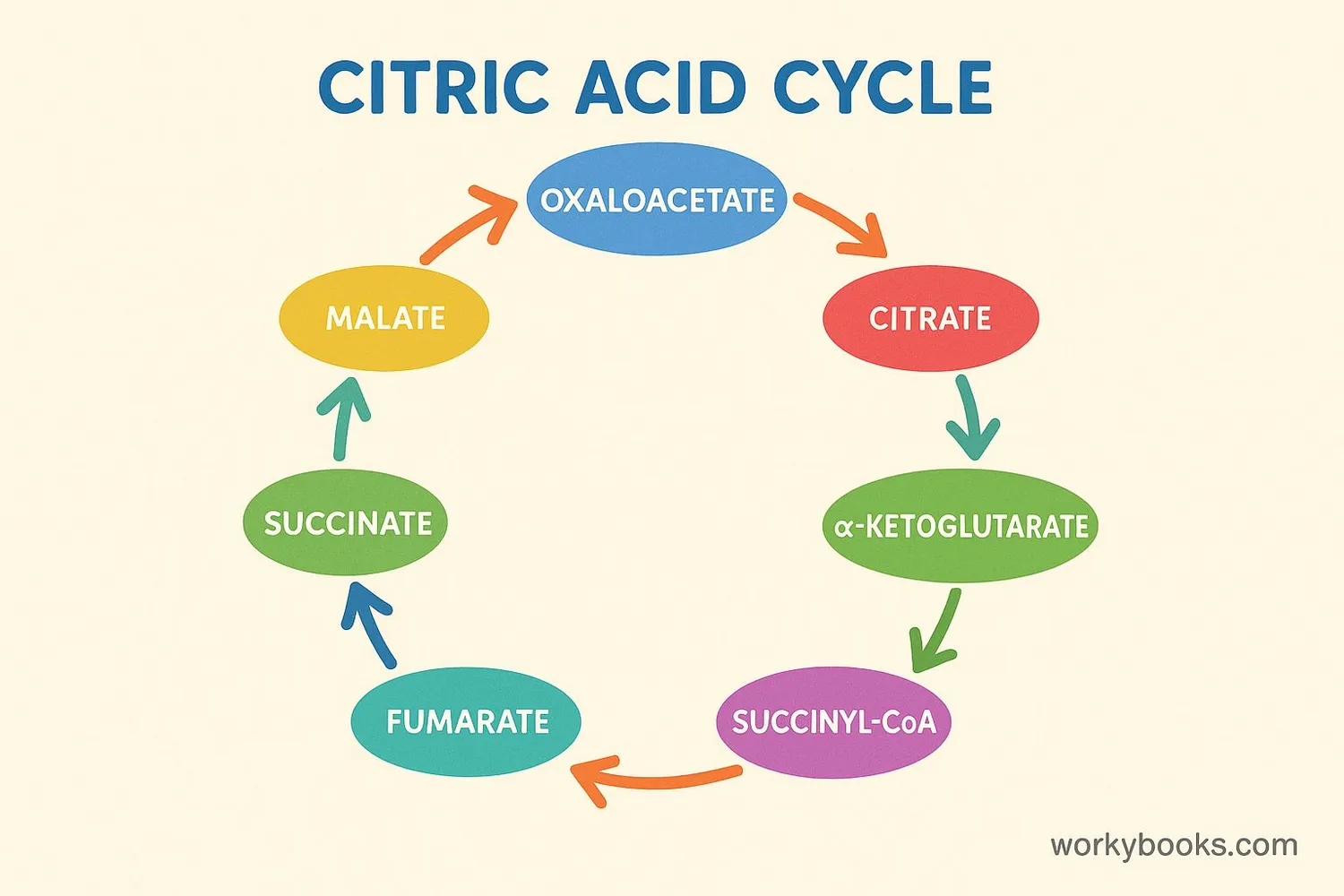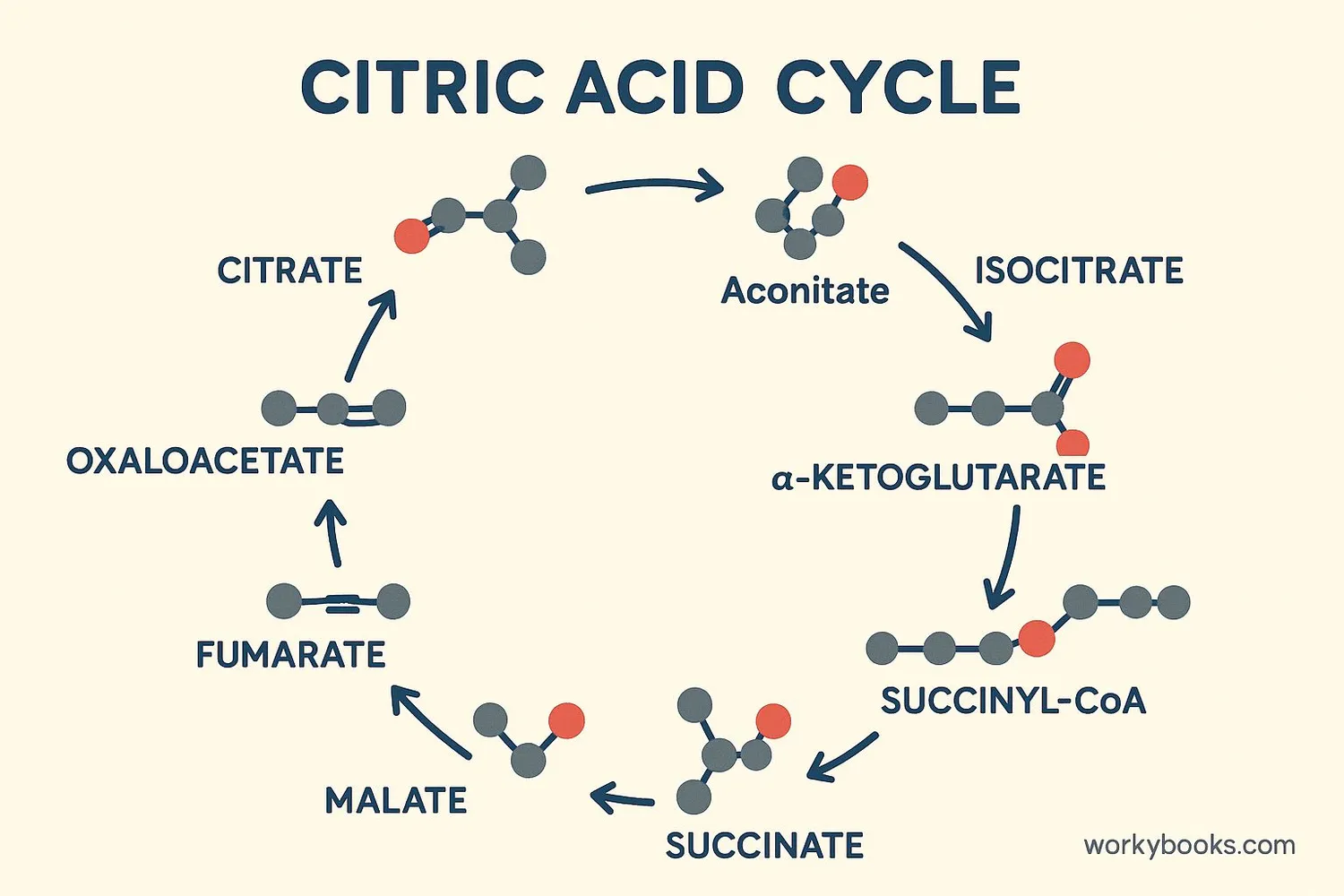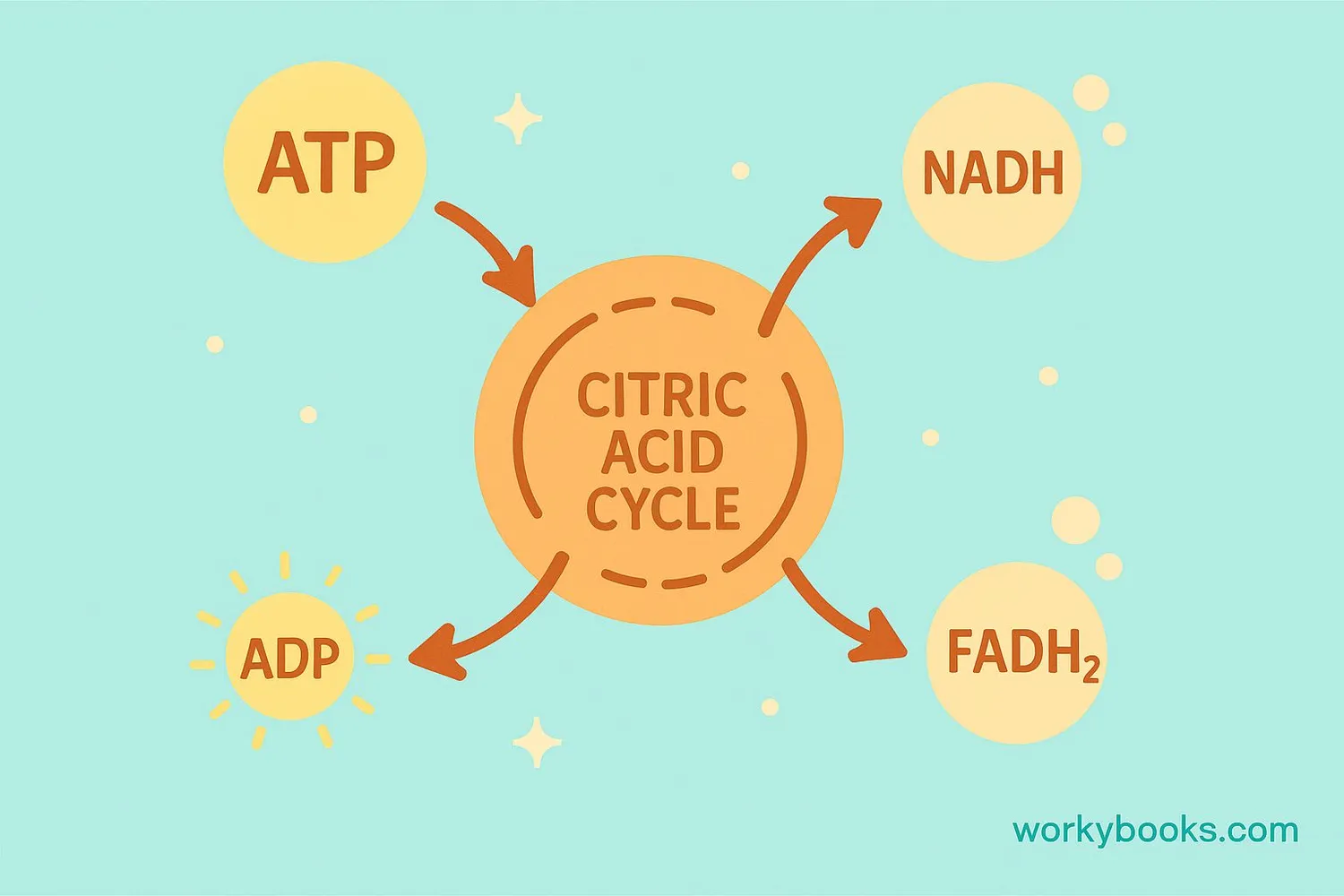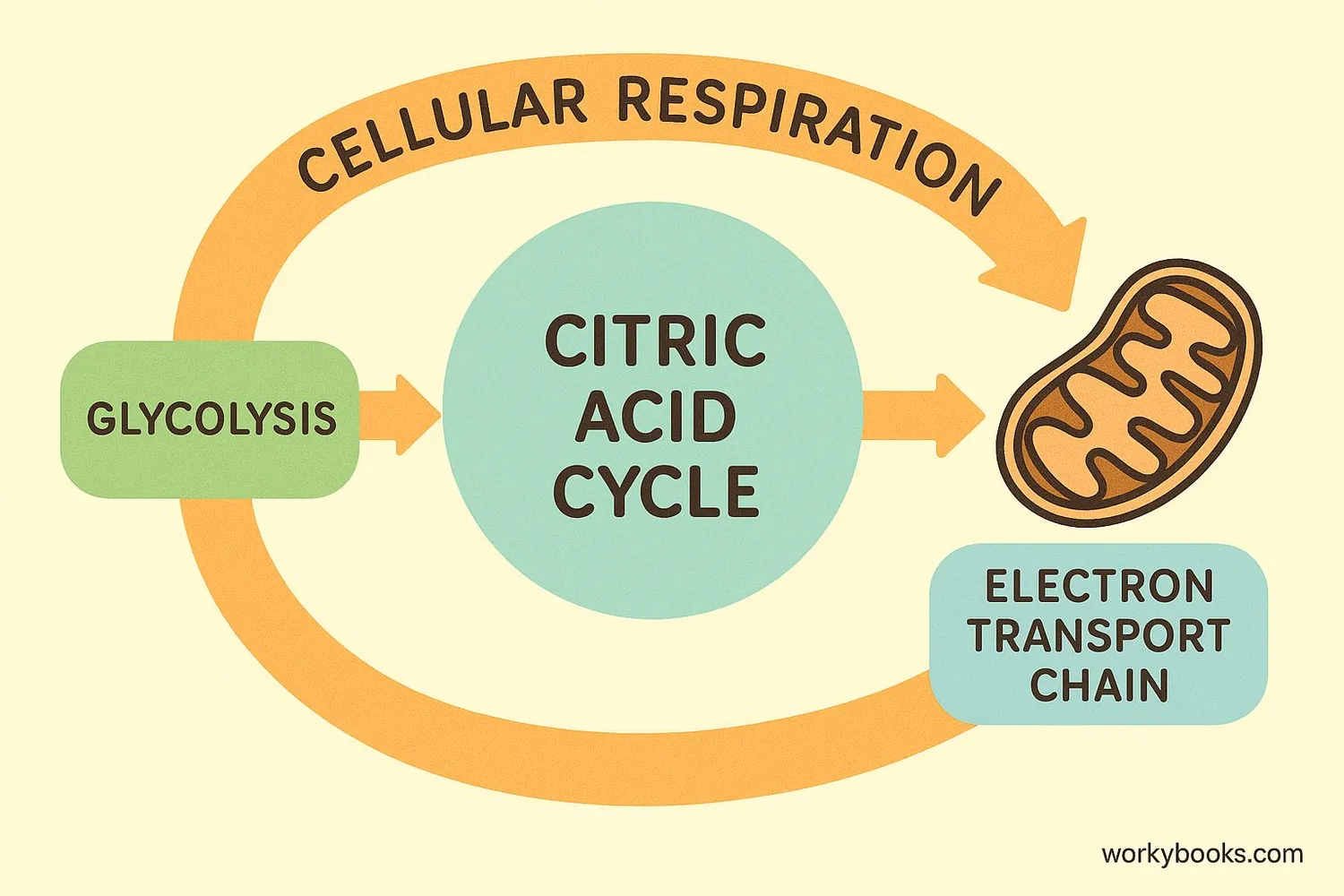Citric Acid Cycle - Definition, Examples, Quiz, FAQ, Trivia
Discover how cells create energy through the Krebs cycle!
What is the Citric Acid Cycle?

The citric acid cycle, also known as the Krebs cycle, is a series of chemical reactions that living cells use to generate energy. It's like a cellular power plant that takes the fuel from our food and converts it into energy the cell can use!
Think of the citric acid cycle as a merry-go-round of chemical reactions. It takes small pieces of sugar, fat, and protein and spins them around to extract energy. This process happens in tiny structures inside our cells called mitochondria, which are often called the "powerhouses" of the cell.
Discovery Fact!
The cycle is named after Sir Hans Krebs, the scientist who discovered it in 1937. He won a Nobel Prize for this important discovery!
Steps of the Citric Acid Cycle

The citric acid cycle is made up of 8 main steps. Each step is like a station on an assembly line where molecules get transformed:
Acetyl-CoA Formation
Fuel molecules enter the cycle by joining with a helper molecule
Citrate Formation
The first product, citrate, is formed (that's where the name comes from!)
Isocitrate Formation
The citrate molecule gets rearranged
First Energy Harvest
First carbon dioxide molecule is released and energy carriers are made
Alpha-Ketoglutarate
Another rearrangement happens
Second Energy Harvest
Second carbon dioxide is released and more energy carriers are made
Succinate Formation
Direct ATP energy is produced
Cycle Restarts
The molecule is transformed back to the starting point
The amazing thing about this cycle is that it's a continuous loop. For every turn of the cycle, the starting molecule is regenerated, ready to accept another fuel molecule and start the process all over again!
Products of the Citric Acid Cycle

The citric acid cycle is like a factory that takes in raw materials and produces valuable products. For each turn of the cycle, here's what gets produced:
ATP Energy
1 ATP molecule is produced directly
Energy Carriers
3 NADH and 1 FADH₂ molecules are made (these carry energy to make more ATP later)
Carbon Dioxide
2 CO₂ molecules are released as waste (which we breathe out)
The energy carriers (NADH and FADH₂) are especially important because they go on to power the next stage of energy production in the cell, called the electron transport chain, where most of the ATP is actually made.
Energy Production!
While the citric acid cycle only makes 1 ATP directly, the energy carriers it produces go on to help make about 10 more ATP molecules!
Function and Importance

The citric acid cycle plays several crucial roles in our cells:
Energy Production
It's a key part of how cells make ATP energy from food
Molecule Building Blocks
It provides building blocks for making other important molecules
Waste Management
It helps remove carbon dioxide waste from the cell
Without the citric acid cycle, our cells wouldn't be able to efficiently extract energy from the food we eat. It's a central hub in our metabolism that connects the breakdown of sugars, fats, and proteins to energy production.
The cycle is also important because it provides intermediate molecules that cells use to build other important substances like amino acids (for proteins) and nucleotides (for DNA).
Citric Acid Cycle Knowledge Check
Test your understanding of the citric acid cycle with this quiz. Answer all 5 questions to see how much you've learned.
Frequently Asked Questions
Here are answers to some common questions about the citric acid cycle:
Interesting Facts About the Citric Acid Cycle
Discover some amazing facts about the citric acid cycle!
Historical Discovery
Hans Krebs discovered the cycle in 1937 while working at the University of Sheffield in England. He was forced to leave Germany because of the Nazi regime's policies.
Energy Production
Although the citric acid cycle only produces 1 ATP directly per turn, the energy carriers it creates (NADH and FADH₂) go on to produce about 10 more ATP molecules in the electron transport chain.
Universal Process
The citric acid cycle is found in almost all aerobic organisms - from humans to bacteria! This shows how fundamental this process is to life as we know it.
Amazing Speed
In a single cell, the citric acid cycle can complete thousands of turns every minute! Your body performs this cycle trillions of times to keep you energized.


